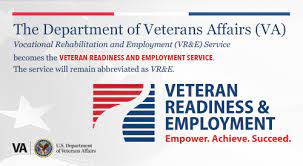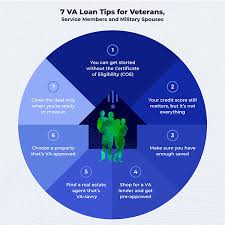VA Vocational Rehabilitation: Empowering Veterans for Success
For veterans transitioning from military service to civilian life, finding meaningful employment can be a daunting task. Fortunately, the Department of Veterans Affairs (VA) offers a comprehensive program called Vocational Rehabilitation and Employment (VR&E) to assist veterans in their journey toward successful careers.
The VA’s Vocational Rehabilitation program aims to empower veterans with service-connected disabilities by providing them with the necessary tools, resources, and support to overcome barriers and achieve gainful employment. This program recognizes that every veteran has unique needs and aspirations, and it tailors its services accordingly.
One of the key components of VR&E is individualized career counseling. Through one-on-one sessions with experienced vocational rehabilitation counselors, veterans can explore their interests, skills, and goals. These counselors work closely with veterans to develop personalized plans that outline the steps needed to achieve their desired careers.
In addition to career counseling, VR&E offers a range of other vital services. Veterans may receive assistance in identifying suitable job opportunities, creating effective resumes and cover letters, developing interview skills, and even exploring entrepreneurial ventures through self-employment options. The program also provides access to vocational training programs that can enhance veterans’ skill sets and increase their employability in specific fields.
Financial support is another crucial aspect of VR&E. Eligible veterans may receive financial assistance for tuition fees, books, supplies, and even housing allowances while pursuing vocational training or education programs. This support helps alleviate some of the financial burdens that often accompany career transitions.
Moreover, VR&E recognizes that some veterans may require additional accommodations due to their service-connected disabilities. The program offers services such as assistive technology assessments and training, specialized equipment provision, vehicle modifications for those with mobility challenges, and other reasonable accommodations necessary for successful employment.
To qualify for VR&E benefits, veterans must have a service-connected disability rating determined by the VA. However, eligibility criteria extend beyond disability ratings alone. Veterans must also demonstrate an employment handicap, meaning that their disability poses a significant barrier to securing and maintaining suitable employment.
The VA’s Vocational Rehabilitation program has transformed the lives of countless veterans by providing them with the necessary support to overcome challenges and pursue fulfilling careers. By equipping veterans with the skills, resources, and confidence they need to succeed, VR&E plays a crucial role in ensuring that no veteran is left behind.
If you are a veteran seeking assistance in your career transition or exploring vocational training opportunities, reach out to your local VA office or visit the VA’s official website for more information on VR&E. Remember, you served our country selflessly, and now it’s time for us to support you on your path to success.
Frequently Asked Questions About VA Vocational Rehabilitation: A Comprehensive Guide
- What is the process for applying for VA Vocational Rehabilitation?
- How can I find out if I am eligible for VA Vocational Rehabilitation?
- What types of services are offered through VA Vocational Rehabilitation?
- What kind of job training and support is available through VA Vocational Rehabilitation?
- How long does it take to get approved for VA Vocational Rehabilitation benefits?
- Is there a cost associated with participating in the program?
- Where can I find more information about VA Vocational Rehabilitation programs and services?
- Are there any other resources available to help me transition into a civilian career after leaving the military?
What is the process for applying for VA Vocational Rehabilitation?
The process for applying for VA Vocational Rehabilitation and Employment (VR&E) involves several steps to ensure that veterans receive the necessary support and resources. Here is an overview of the application process:
- Initial Application: To begin the process, veterans need to complete and submit an application form, known as VA Form 28-1900, Application for Vocational Rehabilitation Benefits. This form can be accessed online through the VA’s official website or obtained from a local VA office.
- Eligibility Determination: After submitting the application, a vocational rehabilitation counselor will review it to determine eligibility. Eligibility is based on several factors, including having a service-connected disability rating and an employment handicap due to the disability.
- Evaluation: If determined eligible, veterans will undergo a comprehensive evaluation conducted by a vocational rehabilitation counselor. This evaluation assesses their interests, aptitudes, abilities, and limitations to help develop an individualized rehabilitation plan.
- Individualized Rehabilitation Plan (IRP): Based on the evaluation results and discussions with the veteran, a vocational rehabilitation counselor will create an IRP tailored to their specific needs and goals. The IRP outlines the services, training programs, and supports needed to achieve successful employment outcomes.
- Services and Training: Once the IRP is developed and approved by both the veteran and counselor, VR&E services can begin. These services may include career counseling, job placement assistance, educational or vocational training programs, on-the-job training opportunities, assistive technology assessments or provision of specialized equipment.
- Progress Monitoring: Throughout the VR&E program participation, regular meetings with the assigned vocational rehabilitation counselor will occur to monitor progress towards achieving employment goals outlined in the IRP. Adjustments can be made to ensure effectiveness and address any challenges that may arise.
- Employment Assistance: As veterans near completion of their training or education program outlined in their IRP, counselors provide assistance with job placement efforts such as resume writing, interview preparation, and networking opportunities. The goal is to help veterans secure and maintain suitable employment.
It’s important to note that the VR&E process may vary depending on individual circumstances. Veterans are encouraged to reach out to their local VA office or visit the VA’s official website for detailed information on the application process and to receive personalized guidance from vocational rehabilitation counselors.
Remember, VR&E is designed to support veterans in their transition to civilian employment by providing tailored services and resources. Don’t hesitate to explore this valuable program if you believe it can benefit you on your career journey.
How can I find out if I am eligible for VA Vocational Rehabilitation?
To determine your eligibility for VA Vocational Rehabilitation and Employment (VR&E), you can follow these steps:
- Visit the official website: Start by visiting the Department of Veterans Affairs (VA) official website at www.va.gov. Look for the VR&E section, which provides detailed information about the program.
- Contact your local VA office: Reach out to your nearest VA Regional Office or Vet Center. They have trained professionals who can guide you through the eligibility process and answer any questions you may have. You can find contact information for your local office on the VA’s website.
- Gather necessary documentation: To determine eligibility, you will need to provide specific documentation, such as your military service records (DD-214), medical records, disability rating decision letter from the VA, and any other relevant documents related to your disability or employment history.
- Schedule an appointment: Once you have gathered all the required documents, schedule an appointment with a vocational rehabilitation counselor at your local VA office or Vet Center. During this appointment, they will assess your eligibility based on your disability rating and employment handicap.
- Attend an evaluation: As part of the eligibility determination process, you may be required to undergo a comprehensive evaluation by a VA healthcare professional to assess how your service-connected disabilities impact your ability to work and identify any necessary accommodations.
- Collaborate on an Individualized Plan for Employment (IPE): If you are found eligible for VR&E, you will work with a vocational rehabilitation counselor to develop an Individualized Plan for Employment (IPE). This plan outlines the specific services and support that will help you achieve suitable employment goals.
Remember that each veteran’s situation is unique, and eligibility determinations are made on a case-by-case basis. It is essential to consult with a vocational rehabilitation counselor at the VA to receive personalized guidance based on your circumstances.
By reaching out to the VA and engaging in the VR&E program, you can access the support and resources necessary to overcome barriers and pursue a successful career.
What types of services are offered through VA Vocational Rehabilitation?
The VA Vocational Rehabilitation and Employment (VR&E) program offers a range of services to assist veterans with service-connected disabilities in achieving meaningful employment. Some of the key services provided include:
- Career Counseling: Veterans receive personalized one-on-one career counseling sessions with vocational rehabilitation counselors. These counselors help veterans explore their interests, skills, and goals, and develop individualized plans for achieving their desired careers.
- Job Placement Assistance: VR&E offers assistance in identifying suitable job opportunities based on veterans’ skills, qualifications, and interests. This includes job search strategies, resume writing support, interview preparation, and networking guidance.
- Vocational Training: Eligible veterans can access vocational training programs that enhance their skills and increase employability in specific fields. The program covers tuition fees, books, supplies, and even provides housing allowances during training.
- Entrepreneurship Support: VR&E recognizes veterans’ entrepreneurial aspirations and offers assistance for those interested in starting their own businesses or becoming self-employed. This includes guidance on business planning, accessing capital resources, and navigating the complexities of entrepreneurship.
- Financial Support: Veterans participating in VR&E may be eligible for financial assistance to cover various expenses related to their rehabilitation process. This can include funds for education or training programs as well as other necessary accommodations.
- Assistive Technology Services: For veterans with disabilities that require assistive technology or specialized equipment to perform job-related tasks effectively, VR&E provides assessments, training, and provision of necessary assistive devices or modifications.
- Reasonable Accommodations: The program ensures that veterans receive reasonable accommodations in the workplace to address any limitations imposed by their service-connected disabilities. This could involve workplace modifications or adaptations necessary for successful employment.
- Independent Living Services: In addition to employment-related support, VR&E also offers independent living services for eligible veterans with significant disabilities who require assistance with daily living activities.
It’s important to note that the specific services provided through VR&E may vary based on individual needs and eligibility criteria. Veterans are encouraged to contact their local VA office or visit the VA’s official website for detailed information and guidance on accessing these services.
What kind of job training and support is available through VA Vocational Rehabilitation?
The VA Vocational Rehabilitation and Employment (VR&E) program offers a wide range of job training and support services to eligible veterans with service-connected disabilities. These services are designed to enhance veterans’ skills, improve their employability, and assist them in securing meaningful employment. Here are some key offerings:
- Individualized Career Counseling: VR&E provides one-on-one career counseling sessions with vocational rehabilitation counselors. These professionals assess veterans’ interests, skills, and goals to develop personalized vocational plans.
- Vocational Training: Veterans may receive financial support for approved vocational training programs offered by community colleges, technical schools, or other educational institutions. This training equips veterans with specific skills needed for various industries and occupations.
- On-The-Job Training (OJT): Veterans can participate in OJT programs where they receive hands-on training at an employer’s workplace. During this period, the VA may reimburse employers for a portion of the veteran’s wages to help offset training costs.
- Apprenticeships: VR&E supports veterans in apprenticeship programs by collaborating with employers who provide structured on-the-job learning combined with classroom instruction. Veterans earn wages while gaining valuable experience.
- Licensing and Certification Exams: The program assists veterans in covering the costs of licensing or certification exams required for specific occupations or industries.
- Resume Development and Job Search Assistance: VR&E offers guidance on creating effective resumes and cover letters tailored to veterans’ desired careers. Additionally, they provide job search resources, interview preparation assistance, and networking opportunities.
- Self-Employment Support: For those interested in starting their own businesses or pursuing self-employment ventures, VR&E provides resources such as business plan development assistance, entrepreneurial training programs, and access to small business loans.
- Assistive Technology Assessments and Services: Veterans with disabilities may receive assessments to determine appropriate assistive technology devices or modifications needed for their work environment.
- Transition Assistance: VR&E collaborates with other VA programs and community organizations to offer transition assistance services, including workshops on job search strategies, resume writing, and interview skills.
It’s important to note that the specific services provided through VR&E are tailored to each veteran’s individual needs and goals. Eligible veterans interested in accessing these services should contact their local VA office or visit the official VA website for detailed information and guidance on how to apply.
How long does it take to get approved for VA Vocational Rehabilitation benefits?
The timeframe for approval of VA Vocational Rehabilitation and Employment (VR&E) benefits can vary depending on several factors. While the VA strives to process applications as efficiently as possible, individual circumstances and complexities may influence the timeline.
Typically, the initial application process involves submitting an application form, providing supporting documentation, and attending an eligibility interview with a Vocational Rehabilitation Counselor (VRC). The VRC will assess your eligibility based on various factors such as your service-connected disability rating and the impact of your disability on employment.
Once your application is submitted, it may take several weeks to a few months for the VA to review and make a determination. The exact timeframe can depend on factors such as the volume of applications being processed at that time, any additional information or documentation required, and the complexity of your case.
After the initial eligibility determination, if you are found eligible for VR&E benefits, you will work closely with your assigned VRC to develop an Individualized Rehabilitation Plan (IRP). This plan outlines your specific career goals and the services needed to achieve them. The development of an IRP can take some time as it requires careful consideration of your abilities, interests, and vocational needs.
It’s important to note that every veteran’s situation is unique, and there is no fixed timeline for approval. However, the VA is committed to providing timely assistance to veterans in their pursuit of vocational rehabilitation services. If you have concerns about delays or need updates on the status of your application, it is advisable to contact your local VA office or reach out directly to your assigned VRC for more information.
Remember that patience is key throughout this process. While waiting for approval, you can use this time to gather any additional documentation or prepare yourself for potential vocational training opportunities. The ultimate goal of VR&E is to support veterans in achieving meaningful employment outcomes by providing them with comprehensive resources and assistance along their vocational rehabilitation journey.
Is there a cost associated with participating in the program?
No, there is no cost associated with participating in the VA’s Vocational Rehabilitation and Employment (VR&E) program. The program is designed to provide support and assistance to eligible veterans with service-connected disabilities at no expense to them. In fact, VR&E offers financial benefits such as tuition assistance, housing allowances, and other allowances to help cover the costs associated with vocational training or education programs. This ensures that veterans have access to the resources they need for a successful transition into civilian employment without facing financial burdens.
Where can I find more information about VA Vocational Rehabilitation programs and services?
To find more information about VA Vocational Rehabilitation programs and services, you can visit the official website of the U.S. Department of Veterans Affairs (VA) at www.va.gov. Here are the steps to access information specifically about Vocational Rehabilitation and Employment (VR&E):
- Visit the VA’s official website at www.va.gov.
- On the homepage, navigate to the “Benefits” tab located on the top menu.
- Under the “Benefits” section, select “Vocational Rehabilitation and Employment.”
- You will be directed to the VR&E program page, which provides an overview of the program and its services.
- On this page, you will find detailed information about eligibility requirements, how to apply for VR&E benefits, and what services are offered.
- Additionally, you can explore various resources available under VR&E, such as career counseling, job placement assistance, vocational training programs, and self-employment options.
The VA’s website also provides contact information for VR&E offices across different regions in the United States. If you have specific questions or need further assistance regarding VR&E programs and services, contacting your local VA office or reaching out to a vocational rehabilitation counselor would be beneficial.
Remember that each veteran’s situation is unique, so it’s important to connect with a VR&E counselor who can provide personalized guidance based on your individual needs and goals.
Are there any other resources available to help me transition into a civilian career after leaving the military?
Absolutely! In addition to the VA’s Vocational Rehabilitation and Employment (VR&E) program, there are several other resources available to assist you in transitioning into a civilian career after leaving the military. Here are a few notable ones:
- Transition Assistance Program (TAP): TAP is a mandatory program provided by the Department of Defense (DoD) that offers comprehensive assistance to service members transitioning out of the military. It includes workshops, counseling, and resources to help with resume writing, job search strategies, interview skills, and more.
- Military Skills Translation Tools: Many online platforms and websites offer tools that help translate your military skills and experience into civilian terms. These tools can assist you in identifying how your military background aligns with various civilian occupations, making it easier to market yourself effectively during job searches.
- Military OneSource: Military OneSource is a free resource that provides information, support, and counseling services for military personnel and their families during all phases of military life. They offer career exploration tools, job search assistance, resume building guidance, and access to career coaches who specialize in helping veterans transition into civilian careers.
- Veterans Service Organizations (VSOs): VSOs like the American Legion, Veterans of Foreign Wars (VFW), Disabled American Veterans (DAV), and others provide valuable resources for veterans seeking employment assistance. These organizations often have dedicated employment programs that offer job placement support, networking opportunities, mentorship programs, and scholarships for further education or training.
- State Workforce Agencies: Each state in the US has its own workforce agency that provides employment services to residents. These agencies typically have veteran representatives who specialize in assisting veterans with their career transitions. They can connect you with job fairs, training programs, apprenticeships, and other employment resources specific to your state.
- Professional Associations: Many professional associations have initiatives or programs aimed at supporting veterans entering specific industries or professions. These associations often provide networking opportunities, mentorship programs, and resources to help veterans navigate the civilian job market within their chosen fields.
Remember, these resources are just a starting point, and there may be additional local or regional programs available in your area. It’s also beneficial to reach out to your personal network, fellow veterans, and local community organizations for guidance and support during your transition. Your dedication and skills acquired during military service make you a valuable asset in the civilian workforce, and these resources are here to help you showcase your talents and succeed in your new career path.




